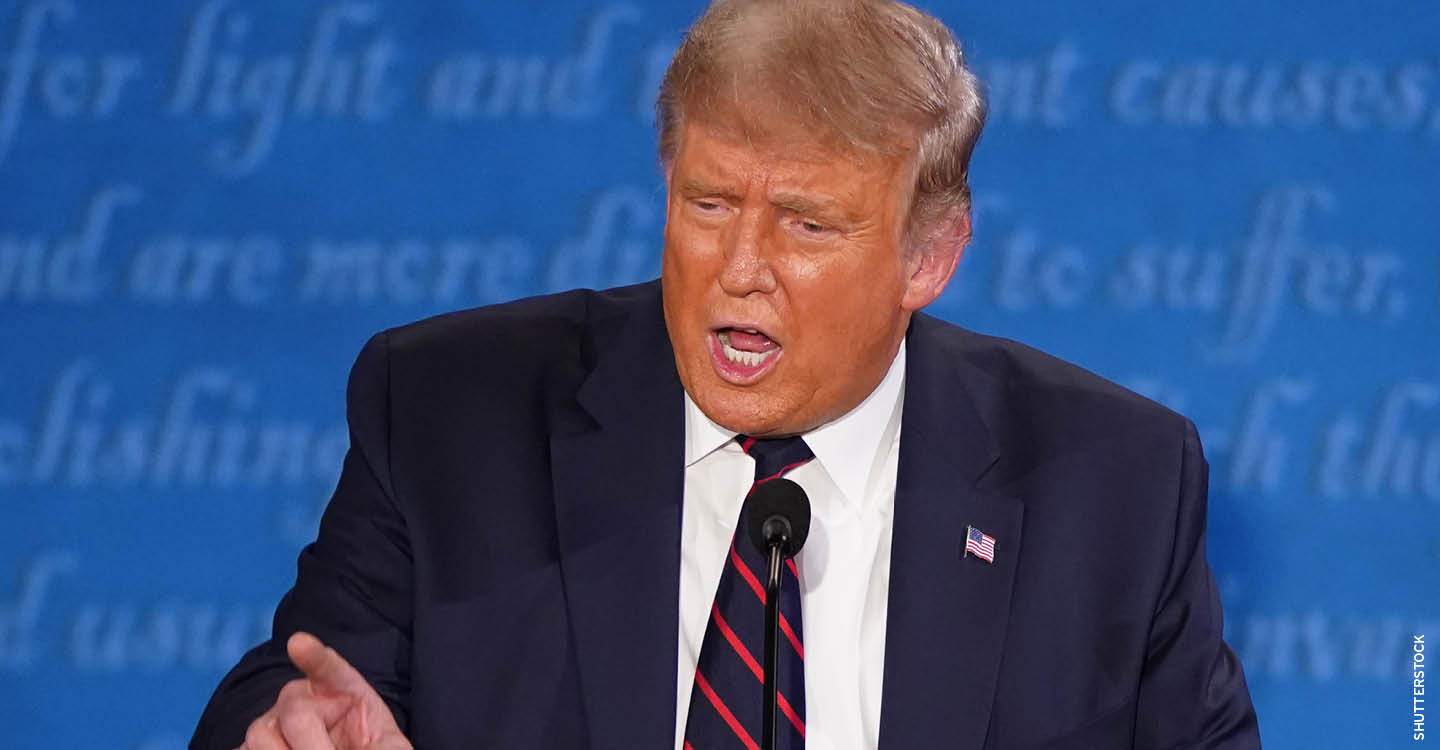President Trump revealed early Friday morning that he and the first lady, Melania Trump, had tested positive for the coronavirus, throwing the nation’s leadership into uncertainty and escalating the crisis posed by a pandemic that has already killed more than 207,000 Americans and devastated the economy.
Trump, who for months has predicted that the virus would simply go away and hours earlier on Thursday night told an audience that “the end of the pandemic is in sight,” will quarantine in the White House for an unspecified period of time, forcing him to withdraw at least temporarily from the campaign trail only 32 days before the election on November 3.
The dramatic disclosure came in a Twitter message just before 1 a.m., hours after it was announced that Trump’s close adviser Hope Hicks had tested positive. The president’s physician said he could carry out his duties “without disruption” from the Executive Mansion.
“Tonight, @FLOTUS and I tested positive for COVID-19,” Trump tweeted. “We will begin our quarantine and recovery process immediately. We will get through this TOGETHER!”
Trump’s positive test result posed immediate challenges for the future of his campaign against former Vice President Joe Biden, the Democratic nominee. Even if Trump, 74, remains asymptomatic, he will lose much of his remaining time on the campaign trail.
The White House did not say how long Trump would have to remain isolated, but it canceled his plans to fly to Florida for a campaign rally on Friday.
During late-night conversations, aides to the president were discussing whether he should give an address to the nation on Friday from the White House or find some other way for him to reassure the public. But the aides were still in a state of shock as they absorbed the news, and there was no immediate word on how far the infection may have spread among senior White House officials, who generally do not wear masks in deference to the president’s disdain for them.
“The president and first lady are both well at this time, and they plan to remain at home within the White House during their convalescence,” Dr. Sean P. Conley, the White House physician, said in a statement, adding: “Rest assured I expect the president to continue carrying out his duties without disruption while recovering, and I will keep you updated on any future developments.”
A person close to the president said on Friday morning that Trump was experiencing coldlike symptoms. [In subsequent days, the president’s doctors revealed that President Trump had had a high fever and that his oxygen levels had briefly dropped on two occasions to a degree that outside medical experts considered very concerning. Doctors treating him said Trump was doing well and feeling better, but they also said he had been given steroids, a treatment that experts said is usually reserved for patients with severe Covid symptoms. These mixed signals have created confusion about how serious the president’s condition really is.]
For months, President Trump has refused to wear a mask in public on all but a few occasions and has repeatedly questioned their effectiveness, despite strong recommendations from scientists and health officials. And as recently as Tuesday, at their opening debate, he mocked Biden for wearing one. “I don’t wear masks like him,” the president said, his voice dripping with derision. “Every time you see him, he’s got a mask.”
It was not immediately clear whether Trump might have been infected by the virus at the time of the debate with Biden, 77, although the two stood on opposite sides of the stage and never got within 6 feet of each other.
Trailing in the polls, the president in recent weeks has increasingly held crowded campaign events in defiance of public health guidelines and sometimes state and local governments. When he accepted the nomination on the final day of the Republican National Convention, he invited more than 1,000 supporters to the South Lawn of the White House and has held a number of rallies around the country since, often with hundreds and even thousands of people jammed into tight spaces, many if not most without masks.
Trump is the latest world leader to become infected. Prime Minister Boris Johnson of the United Kingdom was so sick that he had to be hospitalized before later recovering. Prince Charles likewise contracted the virus, as have the leaders of Brazil, Honduras, Guatemala, and Bolivia. At 74 years old, Trump is older than other world leaders who’ve contracted Covid-19, and they were not seeking re-election when they tested positive.
But the symbolism of an infected American president could rattle allies, as well as governors and financial markets.
In his eighth decade of life, Trump belongs to the age category deemed most vulnerable to the coronavirus. Eight out of every 10 deaths attributed to it in the United States have been among those 65 and older. But the president will have access to some of the best medical treatment and round-the-clock care.
Under the 25th Amendment, a president who is medically incapacitated has the option of temporarily transferring power to the vice president—in this case, Mike Pence—and can reclaim his authority whenever he deems himself fit for duty.
Since the amendment was ratified in 1967, presidents have done so only three times. In 1985, President Ronald Reagan underwent a colonoscopy and briefly turned over power to Vice President George H.W. Bush, although he did not explicitly cite the amendment in doing so. President George W. Bush did invoke the amendment twice in temporarily turning over power to Vice President Dick Cheney during colonoscopies in 2002 and 2007.

